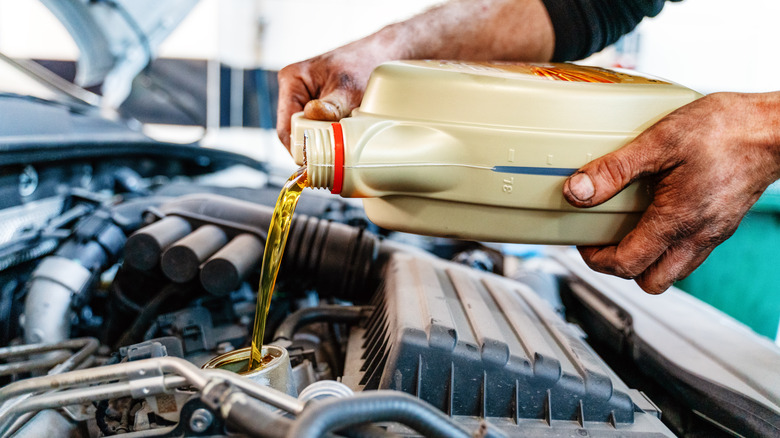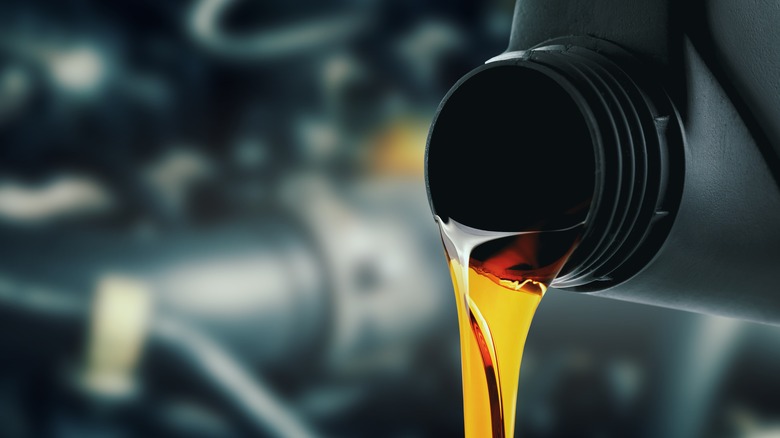How Quickly Can Engine Oil Go Bad, And Does It Expire?
Semi-regular oil changes are (or should be) a regular part of car ownership, with some drivers going to a mechanic for the service and others opting to do it themselves. Changing your own oil comes with a few considerations beyond the act itself.
There are several brands of oil to choose from, as well as different oil types intended for different kinds of engines, environments, and so on. You'll want to be sure to pick something that works well with your car's particular internals. But since oil changes happen so infrequently — changing it out every 5,000 to 10,000 miles is recommended – you could find yourself with a bottle or two of unused engine oil for an extended period.
Just how long can that oil sit there before it needs to be disposed of? Is it safe to use oil that's been sitting on the shelf for a year? Do dates matter for engine oil in the first place? A bottle of oil (opened or not) that's been sitting around for a year or two is likely still okay for you to use, but there are some notable exceptions you need to keep in mind.
The ravages of time
In a nutshell, yes, engine oil can and does expire, whether you're using it or it's being stored outside of a vehicle. Exactly how long that takes is highly variable, though.
Many factors contribute to engine oil shelf life. Synthetic oils (a mixture of refined oil and several other compounds) have an average shelf life of up to eight years. Conversely, conventional engine oils are "rougher" on a molecular level and tend to break down faster, with an approximate shelf life of up to five years.
Those estimates can also vary based on whether or not the container has been opened. Whether your oil is fully synthetic, a synthetic blend, conventional, or monograde also makes a difference. Opening the bottle but not putting the cap back on tight enough (or at all) will speed up degradation as well.
Your choice of storage environment also matters. Ideally, you should keep your bottles of engine oil in a clean, dry, safe location (away from children and pets, away from food, etc.) where the temperature won't drop below 40 degrees Fahrenheit or go above 85 degrees. Under these conditions, oil can remain viable up to, if not a little past, its estimated shelf date. Otherwise it will likely lose effectiveness much sooner.
Is your oil bad?
If you're not sure about the condition of your oil, there are ways to check that don't require pouring what could be expired fluids into a combustion engine. If you're uncertain about a given bottle of oil, even if it appears to be okay, it's recommended that you avoid using it anyway to be on the safe side. It's better to buy a new bottle than risk damaging your engine.
The quickest way to tell if unused oil — that is, oil that hasn't been run through an engine — is still good is to check the printed shelf date. If it's past that date, don't use it. If there is no shelf date on the bottle, you can estimate one by finding the production date and adding five (for conventional) to eight (for synthetic) years onto that. This applies whether the bottle is still sealed or has been opened, so long as the oil was never used.
For used oil, it's more a matter of how it looks. Dark brown or black oil is most definitely breaking (or already broken) down, while fresh oil has more of a light brown or amber color to it. Similarly, viable oil will have a smooth, well, oily texture to it while degraded oil will be much thicker, viscous, and possibly even gritty.


